I have reference the question Finding all cycles in undirected graphs . and write a javascript version, but I got the performance problem, I run on chrome, it took about 8 seconds, too a long time, for only 16 vertices and 33 edges on my undirected graphs. this is codes:
<script>
var graph = [[37,36], [37,168], [37,85], [37,2264], [37,3203], [36,85], [36,536], [36,5097], [85,168], [85,654], [85,755], [85,3607], [85,4021], [85,5097], [168,755], [536,4021], [536,5097], [536,5464], [536,6533], [654,3607], [654,4021], [654,5564], [654,6533], [755,2357], [755,3203], [755,3607], [2264,2357], [2264,3203], [2357,3203], [4021,5097], [5464,5564], [5464,6533], [5564,6533]];
var cycles = [];
function findAllCycles() {
var i, j, len;
var st1 = new Date().getTime();
for (i = 0; i < graph.length; i++) {
var edge = graph[i];
for (j = 0; j < 2; j++) {
findNewCycles( [edge[j]] );
}
}
var st2 = new Date().getTime();
console.log("time: " + (st2-st1));
};
function findNewCycles(path) {
var startNode = path[0],
nextNode;
// visit each edge and each node of each edge
for (var i = 0; i < graph.length; i++) {
var edge = graph[i];
for (var j = 0; j < 2; j++) {
var node = edge[j];
if (node === startNode) // edge refers to our current node
{
nextNode = edge[(j + 1) % 2];
if ( !visited(nextNode, path) ) { // neighbor node not on path yet
// explore extended path
findNewCycles( [nextNode].concat(path), graph, cycles );
}
else if ( (path.length > 2) && (nextNode === path[path.length - 1]) ) { // cycle found
//var p = normalize(path);
//var inv = invert(p);
if ( isNew(path, cycles) ) {
cycles.push(path);
}
}
}
}
}
}
// check if vertex n is contained in path
function visited(node, path) {
return (path.indexOf(node) !== -1);
}
function isNew(path, cycles) {
for (var i = 0; i < cycles.length; i++) {
if ( equal(path, cycles[i]) ) {
return false;
}
}
return true;
}
function equal(path1, path2) {
if (path1.length !== path2.length) {
return false;
}
for (var i = 0; i < path1.length; i++) {
var node1 = path1[i];
for (var j = 0; j < path2.length; j++) {
var node2 = path2[j];
if (node1 === node2) {
break;
}
}
if (j === path2.length) {
return false;
}
}
return true;
}
findAllCycles();
console.log(cycles);
</script>how can I improve the performance.

